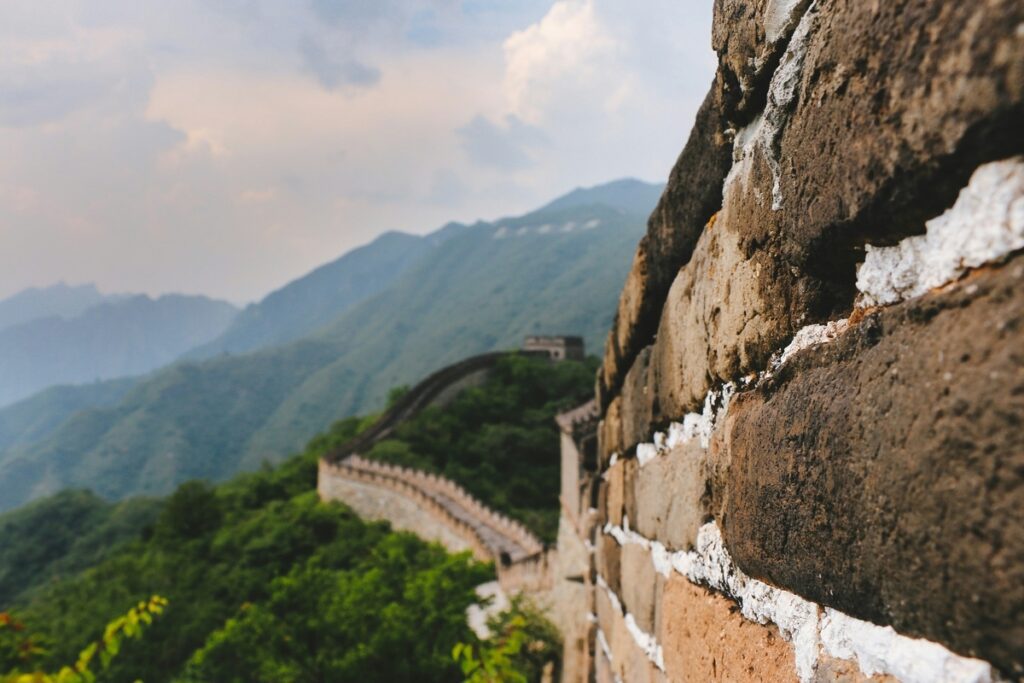In the previous article, we introduced the massive Shunyu Lou and Hehong Tulou Cluster known for its Big Dipper arrangement. This time, as a continuation of our journey, we report on visits to Taxia Village, Xiaban Village, and Yuchang Lou – the world’s oldest tulou with the nickname “Leaning East and Tilting West.”
Previous article is here
The Charming Ancient Village by the River: Taxia Village

After leaving Hehong Tulou Cluster, we headed to Taxia Village. While this isn’t classified as a tulou cluster per se, it’s a charming village settlement with several tulou scattered along the riverside. These tulou are not for tourism but are actual places where residents live their daily lives. We were told that we needed to refrain from casually entering the interiors out of respect for their livelihoods.

As expected of Nanjing, tulou are built abundantly even in places like this

Though it’s a tourist destination, Taxia Village is where residents live quietly.
The village has guesthouses, restaurants, and souvenir shops lined up. What particularly catches the eye is the beautiful riverside scenery and the presence of “Deyuan Hall” in the village center. Climbing the narrow stairway toward Deyuan Hall, numerous souvenir shops line both sides. What was particularly impressive among them was ice candy shaped like tulou. Chinese creativity is truly admirable.

Deyuan Hall seen from above. This is our destination

Starting the stairway path

Shops selling glutinous rice wine along the narrow stairway

Tulou-shaped ice candy. Cute, but I resisted filling my stomach with ice cream

After walking for about 5 minutes, we arrive at Deyuan Hall
Deyuan Hall is the Zhang clan’s ancestral hall, with magnificent decorative columns. It’s a building where traditional Chinese architectural styles remain strong, with delicate wood carvings and sculptures inside. When we visited, we could see elderly locals relaxing in the courtyard, giving us a glimpse of living culture that continues today.

The columns are decorated with dragons and other designs

Inside the hall

Being honored so carefully, the deceased must be happy

Group photo of the Zhang clan. It’s more like a village than a family. You can understand why large collective housing like tulou came to be

A chicken contemplating at Deyuan Hall. Both people and birds, everyone is relaxed
I also can’t forget how delicious the Hakka cuisine was at a restaurant by the river in Taxia Village. The simple yet flavorful dishes using local ingredients healed the fatigue from our long journey.
Visit to Yuchang Lou: A Living Witness to History

Next, we visited Xiaban Village. Like Taxia Village, this isn’t classified as a tulou cluster, but several tulou are built along the riverside. The main attraction of this village is undoubtedly “Yuchang Lou.”

Yuchang Lou is a tulou located in Shangjie Community, Liaocun, Xiaban Village, Shuyang Town, Nanjing County, Zhangzhou City, Fujian Province, built at the end of the Yuan Dynasty and beginning of the Ming Dynasty (around 1368). It’s considered the oldest existing tulou, with a history spanning approximately 700 years. Standing 5 stories and 18.2 meters high, with 54 rooms per floor totaling 270 rooms, its construction area covers 6,358.2 square meters.

Despite being the oldest, it’s a large 5-story tulou
What’s most remarkable is its unique structure. Shortly after construction, the wooden columns of the interior corridors began tilting from left to right. The maximum tilt angle reaches 15 degrees, giving the impression that it might collapse at any moment. However, in this “leaning east and tilting west” state, it has withstood nearly 700 years of wind, rain, and numerous earthquakes, continuing to stand without collapse. This mysterious phenomenon has earned it the nickname “China’s Most Peculiar Building.”

“Tilted East and West for 700 Years” is its catchphrase

Looking at the columns on each floor, they are indeed tilted
Yuchang Lou was originally built jointly by families with five surnames: Liu, Luo, Zhang, Tang, and Fan, and the interior is divided into five sections. Each section has separate staircases, designed incorporating the Five Elements philosophy (metal, wood, water, fire, earth). This way of thinking feels uniquely Chinese and interesting. Additionally, a circular ancestral hall is built in the center of the tulou.

Currently used as active residential housing

Craftspeople can also be seen inside the tulou
One of the most interesting features is the water wells installed in each household’s kitchen on the ground floor. Yuchang Lou has a total of 22 wells, considered the most among all Fujian tulou. Each well is about 1.5 meters deep and 0.6 meters in diameter, conveniently positioned so that drawing water requires just extending your hand. These wells can be easily viewed by tourists.

A well with strong presence inside the room

This room also has a well. Several wells are open to tourists for viewing.
The building’s hierarchical structure also had clear role divisions. The 1st floor was for kitchens, 2nd floor for grain storage, 3rd floor for elderly residents, 4th floor for younger generations, and the 5th floor was used for storing coffins.
While the exterior doesn’t show much age, entering the interior allows you to experience the unique tilt and long history. Currently, 18 households of the Liu surname, about 110 people, actually live there, and some families run guesthouses. Though the location is somewhat remote, many tourists visit this architecturally and historically valuable building.
Summary
Through visiting Taxia Village and Xiaban Village, we were able to experience the diversity of tulou and the depth of their living culture. Particularly, Yuchang Lou is a precious heritage both technically and culturally, with its mysterious structure and ancient history.
Chronologically, we visited Tianluokeng Tulou Cluster next, but we want to thoroughly report on the accommodation experience in several parts as a separate series. In the next article of this series, we’ll report on Chengqi Lou, which is called the King of Tulou and has distinctive multi-layered structure.





